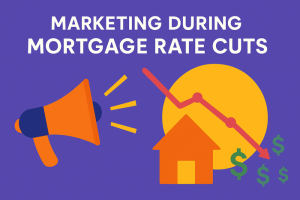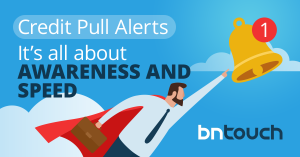Summary
This article covers the essential best practices for mortgage email marketing, offering valuable tips and strategies to optimize email campaigns. It explores ways to create effective emails that engage prospects and nurture existing relationships. By the end, you’ll know how to maximize the success of your mortgage email marketing efforts.
Google, Outlook & Yahoo have all declared war on spammers and greatly increased their criteria of what is considered spam. This webinar highlights all the things you can do to increase your email engagement and avoid the spam folder in 2020. You can check out our full webinar below as well.
Email Service Providers (ESP’s) Have Declared War On Spam
Studies show that 90% of all emails sent in 2019 were spam. To cut back on this email service providers (esp’s) like Gmail, Hotmail, Outlook & Yahoo have all banded together to declare war on spammers. You might be thinking “but I’m not a spammer, so I have nothing to worry about” but you will be effected. Declaring war means they are greatly increasing the criteria of what is flagged and filtered into the spam folder. They’ve given all senders an email score and if your score becomes low enough they will actually throttle your emails so they can’t be sent to Gmail, Outlook, Hotmail or Yahoo users at all. We’ve compiled 9 best practices you can use in order to keep your email/reputation score high, increase your email engagement and avoid the spam folder
What Is An Email Score?
An email or reputation score is something that each email service provider keeps on every domain name that sends emails to their users. The largest contributor to your email score is the engagement rate on your emails. Your engagement rate is a mixture of your email open rate, reply rate and click through rate.
How To Keep Your Emails Out Of The Spam Folder
1. Create A Separate Domain For Cold Emails
Cold emails & prospecting are the most likely to lower your email score. Your cold emails will likely have the highest bounce rate to invalid emails and likely have the lower open and response rate. If you’re sending cold emails from your main corporate email address, especially to purchased email lists who’ve never interacted with your business before this will lower your email score. Continued practice of this will result in your email sends being throttled. What we recommend is that you create a separate domain, landing page and email address to send your cold and prospecting emails from. If your corporate website is broadviewmortgage.com and email john@broadviewmortgage.com create a second domain and email for your marketing. Make a landing page johnhomeloans.com for leads to opt-into your email list and send all your marketing emails from john@johnhomeloans.com. This way if your emails hit the spam folder it won’t ever affect your corporate email.
2. Avoid Purchasing Mailing Lists
Purchasing mailing lists is a dead practice. ESP’s have gotten so good at detecting when you are sending emails to users that have never interacted with your business and they will penalize you for it. Instead of spending money on lists you need to create funnels. Make a landing page with some sort of form that collects lead information, advertise that landing page in your Facebook ads, direct mail, flyers or whatever you use to promote your business. When someone opt-in on your form it’s free reign and you’re able to email them without being penalized.
If you just purchased an email list and you don’t want to let it go to waste make sure you send any emails from your second domain and address you created from the step above.
3. Clean Your Lists Regularly
Bounce rate is probably the second biggest statistic that effects your email score. A bounce is when you send an email to an address that no longer exists. Your email lists will lose about 20% of it’s volume each year just by people getting rid of or moving on to new email addresses. So it is incredibly important that you clean your email lists on a regular basis. Cleaning an email list means you run it through a piece of software that can detect and remove email addresses that are old, deleted or no longer active. You should clean your email lists monthly to avoid being penalized for increased bounce rates on your emails. The top email list cleaning software is called Neverbounce.
4. Track Your Email Stats
Whatever software you use to send email should track some basic stats for you. At minimum what you’ll want to keep track of is your Unsubscribe count/rate, open rate, bounce rate and click through rate. If your unsubscribe rate is over .05% then you’re in the territory of you email score being lowered. You want to shoot for a minimum open rate of 20% to keep your score high. A problematical bounce rate is anything higher than 3% and as long as your click through rate is going up month over month you’re in good shape. The key to all of these stats is that you want them to improve month over month, as long as that’s happening you should have nothing to worry about with your email score.
5. Make Sure Emails Can Be Replied To
No reply addresses are also a dead practice now. Every email you send needs to come from an email address that can be replied to. Again engagement rate is the number one factor to keeping a high email score so not only should it be possible for your borrowers to reply to your email it should be encouraged. A pro tip is to use you or someone from your offices name on your email sends rather than the name of your company. Seeing emails come from a real name incentives more replies as it feels more personal than sending a reply to a corporate catch all address.
Increase Engagement With Mortgage Email Marketing Best Practices
1. Segment Your Lists & Personalize Emails
Any Mortgage CRM worth its salt in 2020 should allow you to segment and personalize your lists. BNTouch allows you to add metatags to your emails which can pull in hundreds of personal record data points into your templated emails. We also allow you to break your list into an infinite number of groups based on any specific data point in the system. Split your lists up by location so you can mention their specific city or neighbor in an email subject line. Break your groups up by first time and multiple time home buyers so you can make sure everyone is getting the email info that want. Split up your list by and create emails that include loan programs, loan amounts, listing/buying agents, and much more so that your email are giving people information that is specifically tailored towards them. This will skyrocket your engagement rate and in turn your email score so you never hit the spam folder.
2. More Text, Less Links
Sending a 10 word email blast with 10 links to your offerings will definitely hit the spam folder and dock your email score. ESP’s want to see lengthy enough emails to that they know you’ve written something that is of value to your recipients. While there is no specific word count you need to hit, test it out with your audience. Write 200, 400 and 600 word emails send them to your audience and see which length gets the best engagement rate. That is the correct length your emails should be. You should also not be filling up your emails with tons of links. Create your emails with a singular focus. What is it that you want people to do after reading this email? Is it to check out the first time home buyer info blog post your wrote? Is it to continue filling out their 1003 application? Figure out what you goal is for the email and write the whole thing around that goal. You shouldn’t be putting more than one or two links into a single email if you want to keep a high email score.
3. No Typos, Or Spammy Words
This one is pretty straight forward but it is important. Higher a proof reader if you need to but if you are sending out emails with typos they will quickly degrade your email score and get you flagged as spam. Just as quickly will using spammy words like “FREE!” or “Buy now!” included in this is using all caps or adding a bunch of exclamation marks!!!! Spammers send out tons of emails every day that use thoughtless tactics like these to bait people into their offers. Email service providers (ESP’s) expect valuable email content to be proofread and well thought out. If there are only one set of eyes reviewing and email before it goes out, we recommend you get at least one more person to review them.
4. Test & Make Adjustments
Constantly test different types of subject lines and writing styles in your emails to see what gets you the most engagement. If you can slowly increase your open, click through and reply rates month over month by sending increasingly better emails then you’ll never have to worry about being flagged for spam or what your email score is. Even a half a percent increase every month, as long as it’s going up is okay.
Key Takeaways
- Focus on Personalization
Tailoring your emails to individual recipients can significantly improve engagement. Use data and personalization tools to craft relevant and targeted content that resonates with your audience.
- Optimize for Mobile Devices
With a growing number of people checking emails on mobile devices, it’s essential to design emails that are mobile-friendly, ensuring your message is easily accessible.
- Provide Valuable Content and Clear CTAs
Always offer value to your audience in your emails. Include clear and concise calls to action (CTAs) that encourage recipients to take the next step in their mortgage journey, whether it’s scheduling a call or filling out a form.
Commonly Asked Questions
- What is the key to engaging recipients in mortgage email marketing?
Personalizing emails for individual recipients increases engagement by making the content more relevant to them.
- Why is it important to optimize emails for mobile devices?
Many recipients read emails on mobile devices, so designing emails to be mobile-friendly ensures they can be easily read and accessed.
- What should be included in mortgage marketing emails to increase conversions?
Including valuable content and clear calls to action (CTAs) that guide recipients towards the next steps in their mortgage process is crucial for driving conversions.
- How can data help improve email marketing for mortgage professionals?
Using data from previous interactions can help tailor content to recipients’ needs, making emails more targeted and effective.





